Accepted Scientific Name: Stapelianthus pilosus Lavranos & D.S.Hardy
J. S. African Bot. 27: 237. 1961 ; cum descr. ampl. et emend. Remarks: non Stapelianthus decaryi Choux (1934).

Trichocaulon decaryi (Stapelianthus pilosus) Photo by: Giuseppe Distefano
This rare species from Madagascar resembles Huernia pillansii. It has stems covered by elongated, almost hair-like tubercles (modified leaves)
Origin and Habitat: Endemic to the arid southern parts of Malagasy Republic (Africa)
Type Locality: Southern Madagascar, Mt. Angavo
Synonyms:
Common Names include:
CHINESE (中文): 毛茸角
Description: (Identifying Characteristics):
Habit: Clump-forming stem succulents 5–10 cm high, richly branched.
Stem: Vegetative shoots green to very dark brown, cylindrical, 2–30 cm long, 5–12 mm wide, 4–6(–8)-angled, with angles rounded, tuberculate.
Leaves: Reduced to strongly reflexed scales; scales constituting soft and brittle thorns.
Roots: Roots fibrous.
Inflorescence: Inflorescences at basal flanks of stems, 1–5-flowered, 1 flower open at times
Flower: 6–18 mm long, with 5 triangular lobes Yellow with brown spots.
Note: The flowers will give off odours when they completely open and if the plants need to be relocated when it blooms it's best to move the plant before the buds form, or after the flower begins to open. Moving the plants as they are developing buds may cause it to spontaneously abort its flowers all together.
Bibliography: Major references and futher lectures
1) Jacobsen “Lexicon of succulent plants” Littlehampton Book Services Ltd. 1974
2) James Cullen, Sabina G. Knees, H. Suzanne Cubey "The European Garden Flora Flowering Plants: A Manual for the Identification of Plants Cultivated in Europe, Both Out-of-Doors and Under Glass" Cambridge University Press, 11/ago/2011
3) Werner Rauh “The Wonderful World of Succulents: Cultivation and Description of Selected Succulent Plants Other Than Cacti” Smithsonian Institution Press, 1984
4) Heidrun E. K. Hartmann "Illustrated Handbook of Succulent Plants: Aizoaceae F-Z" Springer, 2002
5) Gordon D. Rowley "The illustrated encyclopedia of succulents" Crown Publishers, 01/ago/1978
6) Clive Innes "Complete Handbook of Cacti and Succulents" Van Nostrand Reinhold Company, 01/dic/1981
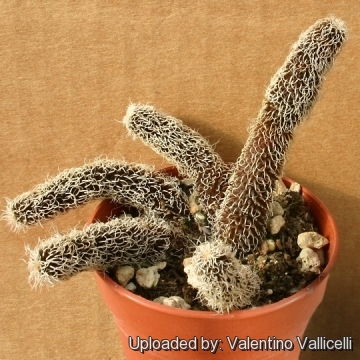 Trichocaulon decaryi (Stapelianthus pilosus) Photo by: Valentino Vallicelli
Trichocaulon decaryi (Stapelianthus pilosus) Photo by: Valentino Vallicelli Trichocaulon decaryi (Stapelianthus pilosus) Photo by: Diego Armentano
Trichocaulon decaryi (Stapelianthus pilosus) Photo by: Diego Armentano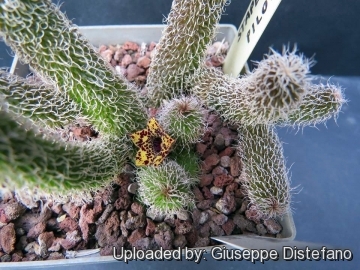 Trichocaulon decaryi (Stapelianthus pilosus) Photo by: Giuseppe Distefano
Trichocaulon decaryi (Stapelianthus pilosus) Photo by: Giuseppe Distefano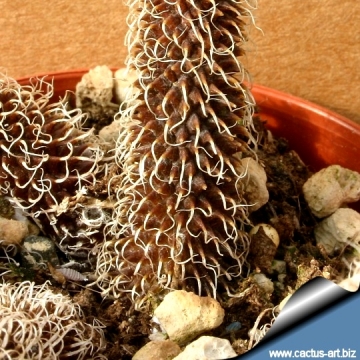 Trichocaulon decaryi (Stapelianthus pilosus) Photo by: Cactus Art
Trichocaulon decaryi (Stapelianthus pilosus) Photo by: Cactus Art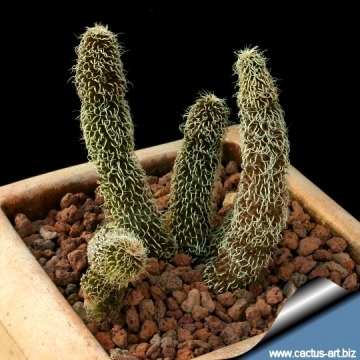 Trichocaulon decaryi (Stapelianthus pilosus) Photo by: Cactus Art
Trichocaulon decaryi (Stapelianthus pilosus) Photo by: Cactus Art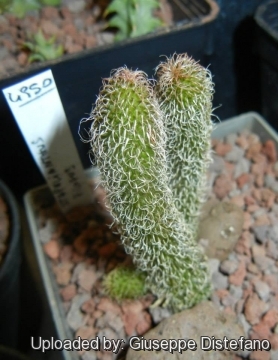 Trichocaulon decaryi (Stapelianthus pilosus) Photo by: Giuseppe Distefano
Trichocaulon decaryi (Stapelianthus pilosus) Photo by: Giuseppe DistefanoCultivation and Propagation: Cultivation and propagation is easy, they are happy in any average succulent house. Re pot every 2 years. Water normally in the growing season, sparsely in the winter. Winter care presents no problems at 5°C with plenty of light.
Pest and diseases: They are very susceptible to stem and root mealy bugs, and damage from these may well initiate fungal attack. Any time when there is a dead or dying stem in the pot it is important to remove it immediately and completely before other healthy stems can become ill too, you can then reliably isolate the healthy parts, dry them off, and re-root them in new compost.
Propagation: Easiest with stem cuttings. Allow cuttings to dry a day before planting. Stems must be laid (Not buried) on gritty compost and will then root from the underside of the stems. It can also be increased from seeds sowing in spring in moist, sandy peat moss. Barely cover seeds. Seeds germinate quickly.

















